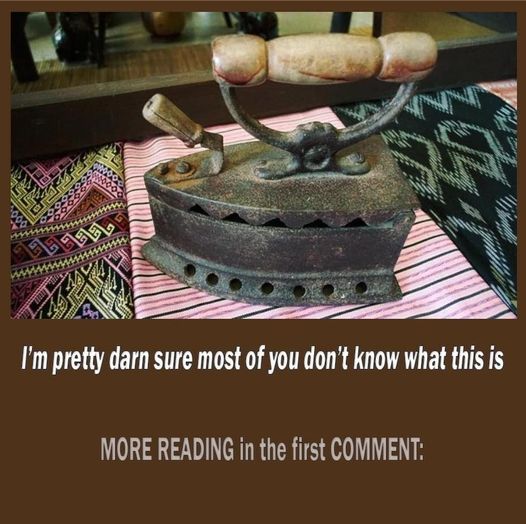When you first saw it, you might have thought, “Yes, that’s an iron.” But have you ever wondered how these irons used coal to heat up and iron clothes? Welcome to the world of charcoal irons.
The quest for a meticulously tidy appearance motivated the development of a classic household device: the iron. While electric irons have become widely popular, offering a quick and practical way to ensure wrinkle-free clothing, let’s journey back in time and explore a lesser-known ancestor—the charcoal iron.
The Charcoal Iron: A Glimpse into the Past
The term “charcoal iron” reveals its operation: it uses charcoal as a heat source during the ironing process. These devices hold a fascinating place in the history of household inventions, surviving as relics despite the passage of time.
Rediscovering a Piece of History
Charcoal irons are significant artifacts in domestic history, representing an era when household chores were completed with ingenuity and creativity. These irons, heated by burning charcoal, were essential for keeping garments crisply pressed.
A Breakthrough in Ironing Technology
Before the advent of the charcoal iron, people used various methods to smooth their clothes, such as placing heavy objects heated over open flames on them. The invention of the charcoal iron was a pivotal moment in ironing technology. These cast iron devices were cleverly designed to house a compartment for burning charcoal, providing a more consistent and effective heat source.
The Mechanics of Charcoal Irons
The creation of charcoal irons was an ingenious feat. These irons contained a hollow compartment where burning charcoal pieces were placed, emitting steady and controlled heat to the steel soleplate. To start the process, the user would open the grate covering the chamber, insert the charcoal, and then begin ironing. The handle, usually made of wood, remained cool enough to handle even during use.
Impact on Domestic Life
The introduction of charcoal irons had a transformative impact on household chores and the quality of pressing. Here’s how they left a lasting impression:
- Increased Efficiency: Charcoal irons offered a consistent and reliable heat source compared to previous methods, reducing ironing time and increasing efficiency.
- Better Pressing Results: The steady heat from the smoldering charcoal allowed for smoother and more even ironing, resulting in perfectly pressed clothes.
- Global Popularity: Charcoal irons quickly became household staples worldwide, marking a significant milestone in the evolution of ironing technology.
- Reduced Physical Strain: Unlike earlier methods requiring frequent reheating, charcoal irons minimized the physical exertion involved in ironing.
Evolution to Modern Electric Irons
While charcoal irons marked a significant improvement over previous methods, they still required careful maintenance and operation. The advent of electric irons in the early 20th century sparked another revolution in ironing. Electric irons provided a straightforward and instant heat source, eliminating the need for charcoal and making ironing more convenient and efficient.
Preserving a Piece of the Past
Today, charcoal irons are cherished as historical artifacts, offering tangible links to bygone eras and reminding us of the ingenuity of our ancestors. Collectors and history enthusiasts value these objects not only for their practical use in historical reenactments or exhibitions but also for the stories they tell about domestic life in the past.
The charcoal iron, a crucial tool in the history of household chores, embodies a chapter of innovation and adaptability. Its evolution from primitive methods to more sophisticated technologies exemplifies humanity’s relentless pursuit of efficiency and progress. While electric irons have long replaced their charcoal predecessors, the legacy of charcoal irons endures as a testament to the creativity and determination of those who relied on them to keep their clothing neat and crisply pressed.
4o
Share via:

